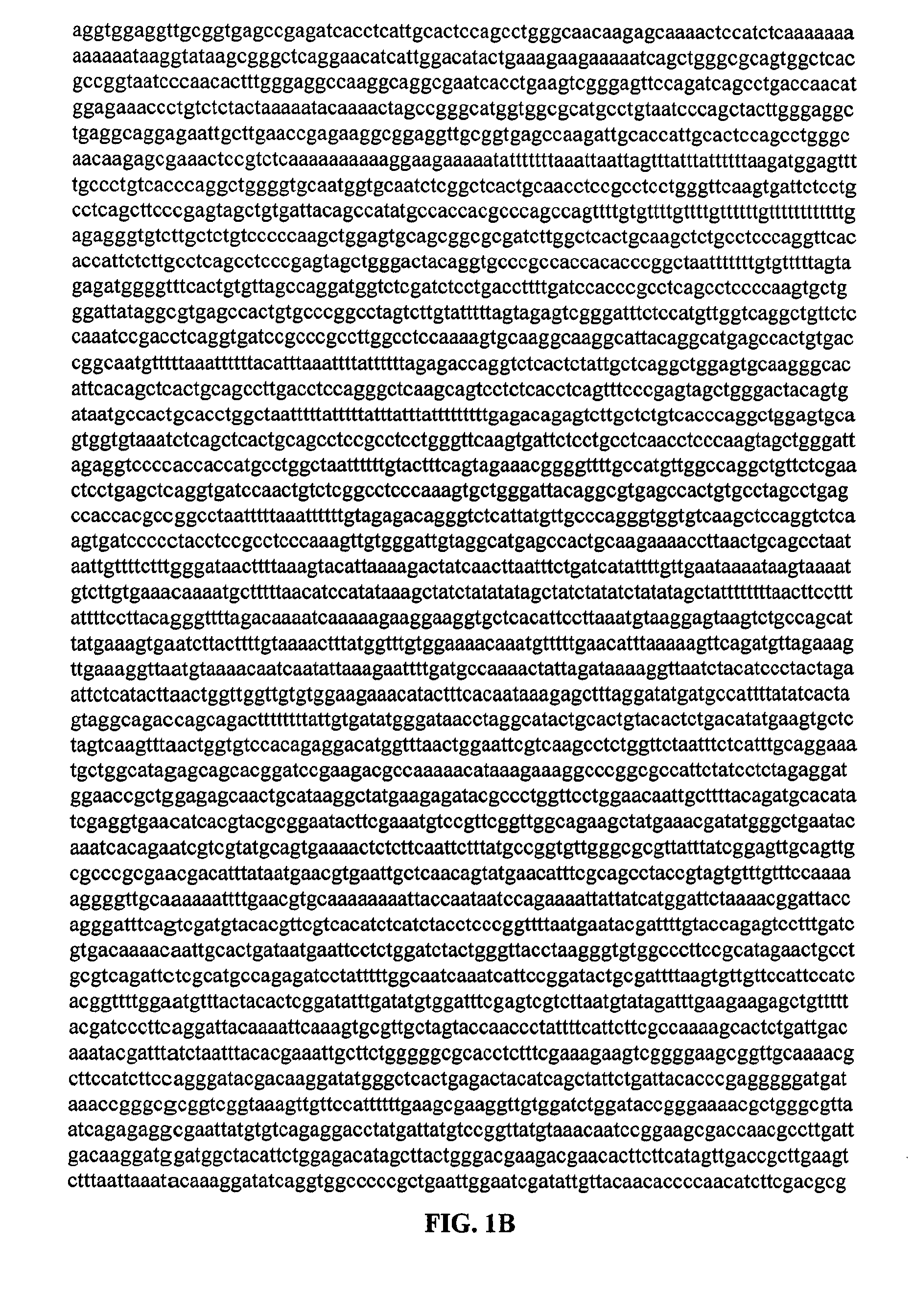Methods for treating spinal muscular atrophy
- Summary
- Abstract
- Description
- Claims
- Application Information
AI Technical Summary
Benefits of technology
Problems solved by technology
Method used
Image
Examples
examples
Cryptic Splice Site
[0450]This example demonstrates that a cryptic splice site is created when a guanine residue is inserted after nucleotide 48 of exon 7 of SMN in a minigene construct comprising in 5′ to 3′ order: (i) the nucleic acid residues of exon 6 of SMN, the nucleic acid residues of intron 6 of SMN, the nucleic acid residues of exon 7 of SMN, the nucleic acid residues of intron 7 of SMN, the first 23 nucleic acid residues of exon 8 of SMN; and (ii) a reporter gene coding sequence fused in frame to the nucleic acid residues of exon 8 of SMN, wherein the reporter gene does not have a start codon. As a result of the cryptic splice site, a deletion of the last seven nucleotides of exon 7 occurs and a frameshift in the open reading frame of the reporter gene is created.
Materials and Methods
Preparation of the Minigene Constructs
[0451]DNA corresponding to a region of the SMN2 gene starting from the 5′ end of exon 6 (ATAATTCCCCC) (SEQ ID NO:7) and ending at nucleic acid residue 23 o...
PUM
| Property | Measurement | Unit |
|---|---|---|
| Length | aaaaa | aaaaa |
Abstract
Description
Claims
Application Information
 Login to View More
Login to View More - R&D
- Intellectual Property
- Life Sciences
- Materials
- Tech Scout
- Unparalleled Data Quality
- Higher Quality Content
- 60% Fewer Hallucinations
Browse by: Latest US Patents, China's latest patents, Technical Efficacy Thesaurus, Application Domain, Technology Topic, Popular Technical Reports.
© 2025 PatSnap. All rights reserved.Legal|Privacy policy|Modern Slavery Act Transparency Statement|Sitemap|About US| Contact US: help@patsnap.com



